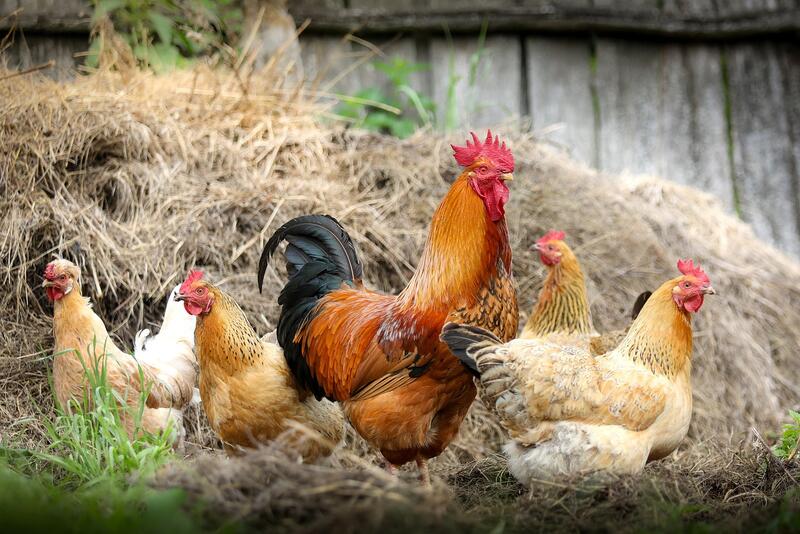Strategies for Carbon Reduction in Raising of poultry: Decarbonization Approaches
This article discusses various strategies for reducing carbon emissions in poultry production, including feed management, energy efficiency, and renewable energy sources.

Introduction
The global poultry industry is growing at a significant pace, and it is expected to continue growing in the coming years. However, this growth comes with a cost, and that cost is carbon emissions. The raising of poultry is a carbon-intensive process, and it is responsible for a significant amount of greenhouse gas emissions. Therefore, decarbonisation in the raising of poultry sector is essential to reduce the carbon footprint of the industry and mitigate the impact of climate change.
What is Decarbonisation in Raising of Poultry Sector and Why is it Important?
Decarbonisation is the process of reducing carbon emissions to zero or near-zero levels. In the raising of poultry sector, decarbonisation means reducing the carbon footprint of the industry by reducing the amount of greenhouse gases emitted during the production process. This is important because the raising of poultry is a significant contributor to global greenhouse gas emissions. According to the Food and Agriculture Organization (FAO), the global livestock sector, including poultry, is responsible for 14.5% of all human-induced greenhouse gas emissions. Therefore, reducing the carbon footprint of the raising of poultry sector is essential to mitigate the impact of climate change.
What are the Main Sources of Carbon Emissions in Raising of Poultry Sector?
The raising of poultry is a carbon-intensive process, and it involves several stages that contribute to carbon emissions. The main sources of carbon emissions in the raising of poultry sector are:
- Feed Production: The production of feed for poultry is a significant contributor to carbon emissions. The production of feed involves the use of fertilizers, which emit nitrous oxide, a potent greenhouse gas. Additionally, the production of feed requires energy, which is usually derived from fossil fuels, further contributing to carbon emissions.
- Poultry Production: The production of poultry involves several stages, including breeding, hatching, rearing, and processing. Each of these stages contributes to carbon emissions. For example, the use of heating and lighting in poultry houses emits carbon dioxide. Additionally, the use of transportation to move poultry from one location to another also contributes to carbon emissions.
- Waste Management: The management of poultry waste is another significant contributor to carbon emissions. Poultry waste contains methane, a potent greenhouse gas that is emitted during the decomposition process.
How Can We Reduce Carbon Emissions in Raising of Poultry Sector?
Reducing carbon emissions in the raising of poultry sector requires a combination of strategies that target the main sources of carbon emissions. Some of the strategies that can be used to reduce carbon emissions in the raising of poultry sector include:
- Feed Management: Improving feed management can significantly reduce carbon emissions in the raising of poultry sector. This can be achieved by reducing the amount of feed wasted, using feed with a lower carbon footprint, and reducing the use of fertilizers.
- Energy Efficiency: Improving energy efficiency in poultry houses can significantly reduce carbon emissions. This can be achieved by using energy-efficient lighting and heating systems, as well as renewable energy sources such as solar panels.
- Waste Management: Improving waste management can also reduce carbon emissions in the raising of poultry sector. This can be achieved by using anaerobic digestion to convert poultry waste into biogas, which can be used as a renewable energy source.
- Transportation: Reducing the distance that poultry is transported can significantly reduce carbon emissions. This can be achieved by locating poultry farms closer to processing facilities and reducing the use of transportation.
What are the Challenges Facing Decarbonisation in Raising of Poultry Sector?
Decarbonisation in the raising of poultry sector faces several challenges, including:
- Cost: Implementing decarbonisation strategies can be expensive, and this can be a significant barrier for small-scale poultry farmers.
- Technology: Some decarbonisation strategies require the use of new technology, which may not be readily available or affordable for small-scale poultry farmers.
- Regulatory Framework: The regulatory framework for the raising of poultry sector may not be conducive to decarbonisation. For example, some regulations may require the use of certain types of fertilizers, which emit greenhouse gases.
- Consumer Preferences: Consumer preferences may not be aligned with decarbonisation strategies. For example, consumers may prefer poultry that is transported long distances, which increases carbon emissions.
What are the Implications of Decarbonisation for Raising of Poultry Sector?
Decarbonisation in the raising of poultry sector has several implications, including:
- Improved Sustainability: Decarbonisation can improve the sustainability of the raising of poultry sector by reducing its impact on the environment.
- Improved Efficiency: Decarbonisation strategies can improve the efficiency of the raising of poultry sector by reducing waste and improving energy efficiency.
- Improved Health: Decarbonisation can improve the health of poultry farmers and consumers by reducing exposure to harmful chemicals and pollutants.
- Improved Reputation: Decarbonisation can improve the reputation of the raising of poultry sector by demonstrating a commitment to sustainability and environmental responsibility.
Conclusion
The raising of poultry is a significant contributor to global greenhouse gas emissions, and decarbonisation is essential to mitigate the impact of climate change. Decarbonisation in the raising of poultry sector requires a combination of strategies that target the main sources of carbon emissions. While decarbonisation faces several challenges, it has several implications, including improved sustainability, efficiency, health, and reputation. Therefore, it is essential to implement decarbonisation strategies in the raising of poultry sector to reduce its carbon footprint and mitigate the impact of climate change.